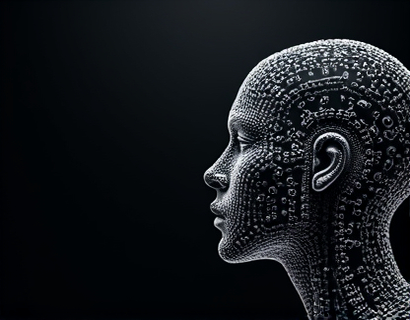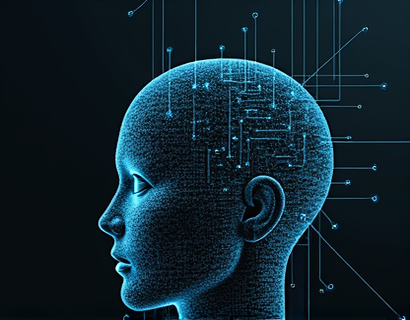Transforming Healthcare Access Through AI-Powered Chat Interfaces
In the rapidly evolving landscape of healthcare, the integration of artificial intelligence (AI) is redefining how patients interact with medical services. An innovative approach involves the development of AI-powered chat interfaces designed to deliver specialized clinic information and industry insights. These platforms are not only verifying content for accuracy and safety but also offering child-friendly versions to ensure educational and secure interactions for users of all ages. This article delves into the transformative impact of such technologies on healthcare accessibility, focusing on how they benefit healthcare consumers, families, students, educators, healthcare professionals, and tech-savvy individuals.
Enhancing Healthcare Accessibility
The primary goal of AI-powered chat interfaces in healthcare is to bridge the gap between patients and medical services. By providing an easy-to-use, conversational interface, these tools make it simpler for individuals to access specialized information about clinic services and the broader healthcare industry. This democratization of information empowers patients to make informed decisions about their health, fostering a more engaged and proactive healthcare community.
Content Verification for Trust and Safety
A critical aspect of these AI chat interfaces is the emphasis on content verification. In the healthcare sector, accuracy and reliability are paramount. These platforms employ rigorous verification processes to ensure that the information provided is up-to-date, accurate, and sourced from credible medical databases. This commitment to verification builds trust among users, making the platform a valuable resource for health-related inquiries.
Personalized Healthcare Guidance
One of the most significant advantages of AI-powered chat interfaces is their ability to offer personalized healthcare guidance. Users can interact with the chat in real-time, asking specific questions about symptoms, treatments, and clinic services. The AI engine processes this information and provides tailored responses based on the user's input, creating a unique and personalized experience. This level of personalization is particularly beneficial for individuals with complex medical conditions who require detailed and context-specific information.
Educational Resources for All Ages
The child-friendly version of these chat interfaces is a game-changer for educational purposes. Designed with younger users in mind, this version simplifies complex medical concepts into understandable language, making healthcare education accessible to children and students. The platform covers a wide range of topics, from basic health and hygiene to more advanced subjects like chronic disease management. This educational component not only benefits students but also empowers families to better understand and support their loved ones' health needs.
Promoting Safe Interactions for Children
Ensuring the safety of children online is a top priority. The child-friendly version of the AI chat interface incorporates strict safety measures to create a secure environment. This includes monitoring for inappropriate content, limiting data collection, and providing parental controls. By maintaining a safe and controlled interaction space, these platforms encourage children to explore healthcare topics without exposing them to potential risks.
Benefits for Healthcare Professionals
Healthcare professionals can also benefit from AI-powered chat interfaces. These tools can serve as a preliminary resource for patients, helping to filter and prioritize the most relevant information before a clinic visit. For staff, the chat can provide quick access to patient histories, treatment plans, and other critical data, streamlining the healthcare delivery process. Additionally, healthcare professionals can use these platforms to stay updated on the latest industry insights and research, enhancing their knowledge and improving patient care.
Tech-Savvy Individuals and Healthtech Enthusiasts
For tech-savvy individuals and healthtech enthusiasts, AI-powered chat interfaces represent an exciting frontier in healthcare technology. These platforms showcase the potential of AI in transforming traditional healthcare models, offering insights into how technology can improve patient outcomes and operational efficiency. The interactive nature of these chats also provides a hands-on experience with AI, helping users understand its capabilities and limitations in the healthcare context.
Engaging Families and Communities
The impact of AI-powered chat interfaces extends beyond individual users to families and communities. By providing a centralized source of healthcare information, these platforms help families make informed decisions about medical care. Community health initiatives can leverage these tools to disseminate important health messages, promote preventive care, and reduce health disparities. The accessibility and reliability of the information make it an invaluable resource for public health campaigns.
Future Prospects and Challenges
As AI technology continues to advance, the potential applications of chat interfaces in healthcare are vast. Future developments may include more sophisticated natural language processing, integration with electronic health records, and advanced predictive analytics. However, challenges such as ensuring data privacy, maintaining user trust, and addressing the digital divide must be carefully managed to realize the full potential of these technologies.
Conclusion
The integration of AI-powered chat interfaces in healthcare is a significant step towards a more accessible, personalized, and informed healthcare system. By providing verified and safe interactions, these platforms empower users of all ages to take control of their health. As the technology evolves, it holds the promise of revolutionizing not only individual patient care but also the broader healthcare landscape, making high-quality medical services more attainable for everyone.










































